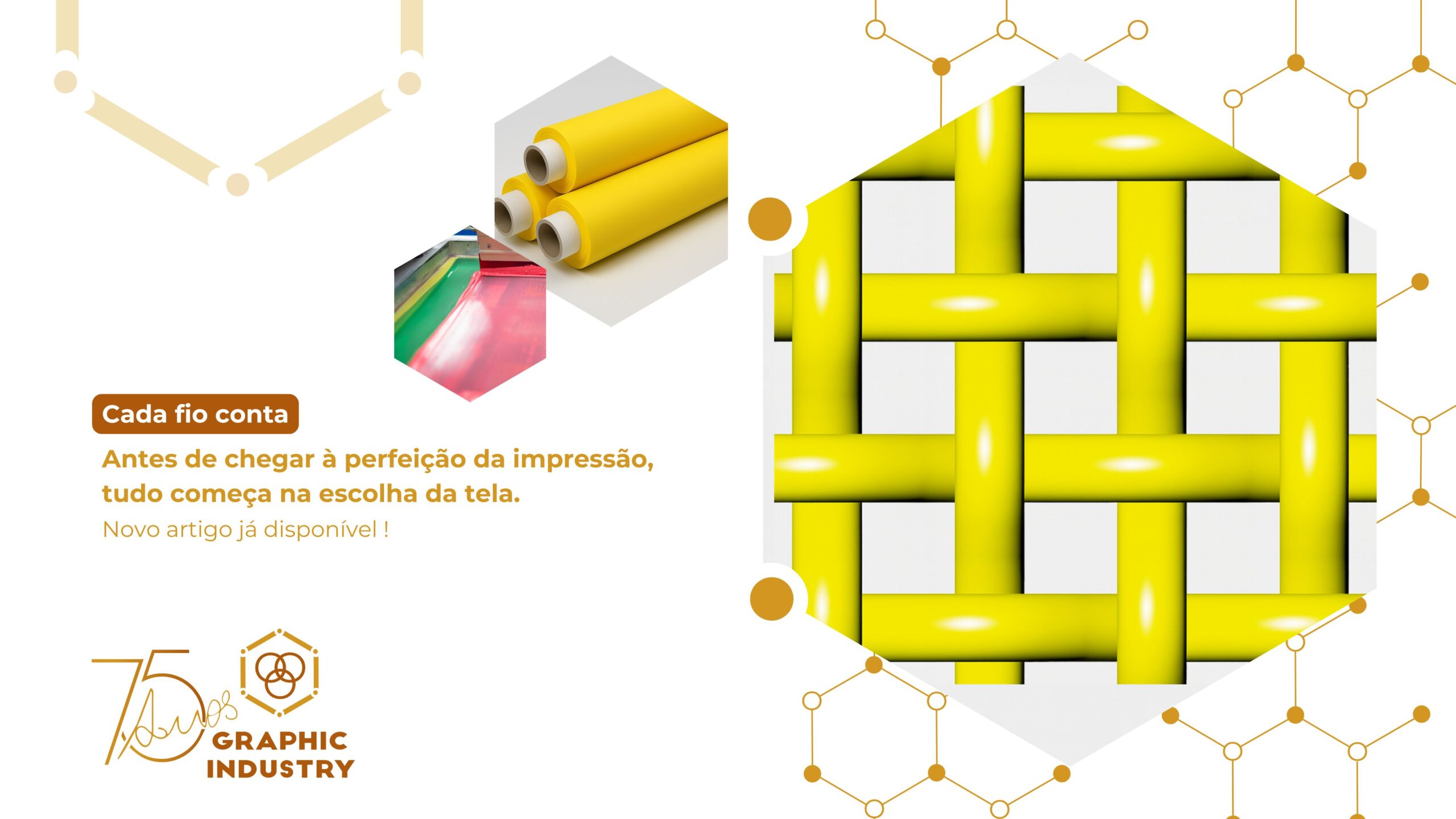
Did you know that screen geometry directly influences the quality and precision of screen printing?
(English Below) 🇵🇹
No universo da serigrafia, a geometria da tela é um dos fatores determinantes para garantir um resultado final de excelência. Entender os parâmetros que definem essa geometria é essencial para otimizar a precisão, o fluxo da tinta e a consistência da impressão.
🧵 O que é geometria da tela?
A geometria da tela inclui todos os aspetos bidimensionais e tridimensionais da rede utilizada na impressão serigráfica. Os dois parâmetros principais são:
- Contagem de fios (Mesh Count): número de fios por centímetro ou polegada.
- Diâmetro do fio: espessura de cada fio antes da tecelagem.
🎯 Como isso afeta a impressão?
A escolha correta da geometria da tela impacta diretamente nas seguintes características:
- Impressão de detalhes finos: quanto maior a contagem de fios e menor o diâmetro, maior a capacidade de imprimir linhas, textos pequenos e imagens em semitons.
- Definição de contornos: bordas mais nítidas e precisas.
- Passagem da tinta: influência direta no fluxo da tinta através da tela.
- Velocidade de impressão: relacionada com a viscosidade da tinta e a fluidez proporcionada pela malha.
- Espessura da camada de tinta: que por sua vez afeta a intensidade da cor e a opacidade.
- Consumo de tinta e tempo de secagem: influenciando a eficiência produtiva.
🧩 Por que é que isto é importante?
Selecionar a tela adequada para cada aplicação permite:
- Melhor definição e qualidade de impressão
- Otimização do consumo de tinta
- Aumento da eficiência produtiva
- Redução de desperdícios e retrabalho
Na Ruy de Lacerda, acompanhamos os nossos clientes na escolha da tela mais adequada para cada desafio técnico. Porque na serigrafia, cada detalhe conta.
📢 E a sua empresa? Já testou diferentes geometrias de tela nas suas aplicações? Que resultados obteve? Partilhe a sua experiência connosco.
🇬🇧
Did you know that mesh geometry directly influences the quality and precision of screen printing?
In the world of screen printing, mesh geometry is one of the key factors in achieving an excellent final result. Understanding the parameters that define this geometry is essential to optimize precision, ink flow, and print consistency.
🧵 What is mesh geometry?
Mesh geometry includes all the two- and three-dimensional aspects of the screen used in screen printing. The two main parameters are:
- Mesh count: the number of threads per centimeter or inch
• Thread diameter: the thickness of each thread before weaving
🎯 How does this affect printing?
Choosing the correct mesh geometry directly impacts the following characteristics:
- Printing fine details: the higher the mesh count and the thinner the thread, the greater the ability to reproduce lines, small text, and halftone images
- Edge definition: sharper and more precise borders
- Ink release: directly influences how ink flows through the mesh
- Printing speed: related to ink viscosity and mesh flow characteristics
- Ink layer thickness: which affects color intensity and opacity
- Ink consumption and drying time: influencing production efficiency
🧩 Why is this important?
Selecting the right mesh for each application allows for:
- Better definition and print quality
- Optimized ink consumption
- Increased production efficiency
- Reduced waste and rework
At Ruy de Lacerda, we support our clients in selecting the most suitable mesh for every technical challenge. Because in screen printing, every detail matters.
📢 What about your company? Have you tested different mesh geometries in your applications? What results did you achieve? Share your experience with us.

